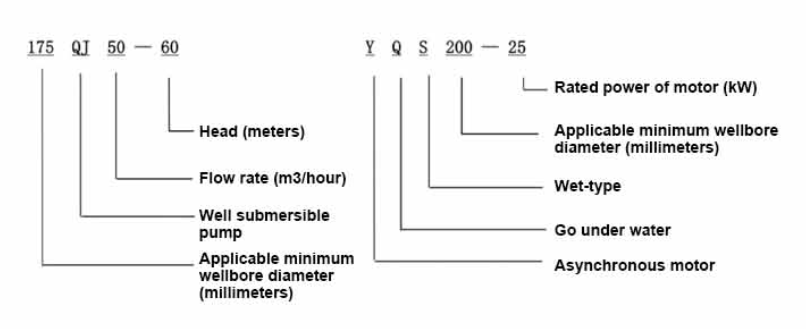Aug . 08, 2024 04:26 Back to list
Steps to Troubleshoot and Fix a Deep Well Submersible Pump for Optimal Performance
How to Repair a Deep Well Submersible Pump
A deep well submersible pump is an essential component for providing water in rural and remote areas. It is designed to be submerged in water and relies on a series of impellers and motors to draw water from deep underground. Despite their durability, these pumps can experience malfunctions over time, requiring repairs. This article will guide you through the process of diagnosing and repairing a deep well submersible pump.
Understanding the Components
Before diving into repair, it’s important to understand the key components of a submersible pump. The main parts include
- Motor Powers the pump and sits at the top of the assembly. - Impellers Spin to generate water movement. - Discharge head The top part where water exits the pump. - Pump shaft Connects the motor to the impellers and drives them. - Seals and bearings Prevent water from entering the motor and support the pump’s moving parts.
Diagnosing the Problem
The first step in repairing a submersible pump is to diagnose the issue. Common signs of malfunction include
- No water output This could be due to electrical issues, a broken impeller, or blockage. - Low water pressure Often a sign of wear and tear on the impellers or sediment buildup. - Strange noises Unusual sounds like grinding or rattling may indicate mechanical failure.
To identify the problem, begin by checking the power supply. Ensure that the circuit breaker is not tripped and that the wiring is intact. If the pump has an automatic control system, ensure it is functioning correctly.
Step-by-Step Repair
how to repair a deep well submersible pump

1. Power Down Before attempting any repairs, turn off the power supply to the pump to ensure safety.
2. Remove the Pump To access the pump, you may need to pull it out of the well. This typically involves disconnecting the drop pipe and lifting the pump using a cable. Make sure to keep the pump upright to prevent damage.
3. Inspect Components Once the pump is out, inspect the components for any visible damage. Look for cracks in the housing, worn seals, or damaged impellers. If your impellers appear to be brittle or broken, they will need replacing.
4. Clean the Pump Sediment and debris can cause blockages and inefficiency. Clean the exterior and interior of the pump and check for clogs in the impellers or intake screen.
5. Replace Worn Parts If you identify any damaged components, such as bearings, seals, or impellers, replace them with new parts. Ensure that all replacements are compatible with the existing pump model.
6. Reassemble After making the necessary repairs, reassemble the pump carefully. Make sure all bolts and seals are securely fastened.
7. Reinstall the Pump Lower the pump back into the well, ensuring it is positioned correctly and all connections are secure.
8. Restore Power Once the pump is reinstalled, restore the power supply and turn the pump on. Monitor its operation closely for any signs of trouble.
Conclusion
Repairing a deep well submersible pump can be a manageable task with the right knowledge and tools. Regular maintenance and timely repairs will extend the life of the pump and ensure that it operates efficiently. If you encounter issues beyond your expertise, it’s wise to consult a professional. With proactive care, your submersible pump can provide you with reliable access to water for years to come.
-
Submersible Water Pump: The Efficient 'Power Pioneer' of the Underwater World
NewsJul.01,2025
-
Submersible Pond Pump: The Hidden Guardian of Water Landscape Ecology
NewsJul.01,2025
-
Stainless Well Pump: A Reliable and Durable Pumping Main Force
NewsJul.01,2025
-
Stainless Steel Submersible Pump: An Efficient and Versatile Tool for Underwater Operations
NewsJul.01,2025
-
Deep Well Submersible Pump: An Efficient 'Sucker' of Groundwater Sources
NewsJul.01,2025
-
Deep Water Well Pump: An Efficient 'Sucker' of Groundwater Sources
NewsJul.01,2025
-
 Submersible Water Pump: The Efficient 'Power Pioneer' of the Underwater WorldIn the field of hydraulic equipment, the Submersible Water Pump has become the core equipment for underwater operations and water resource transportation due to its unique design and excellent performance.Detail
Submersible Water Pump: The Efficient 'Power Pioneer' of the Underwater WorldIn the field of hydraulic equipment, the Submersible Water Pump has become the core equipment for underwater operations and water resource transportation due to its unique design and excellent performance.Detail -
 Submersible Pond Pump: The Hidden Guardian of Water Landscape EcologyIn courtyard landscapes, ecological ponds, and even small-scale water conservancy projects, there is a silent yet indispensable equipment - the Submersible Pond Pump.Detail
Submersible Pond Pump: The Hidden Guardian of Water Landscape EcologyIn courtyard landscapes, ecological ponds, and even small-scale water conservancy projects, there is a silent yet indispensable equipment - the Submersible Pond Pump.Detail -
 Stainless Well Pump: A Reliable and Durable Pumping Main ForceIn the field of water resource transportation, Stainless Well Pump has become the core equipment for various pumping scenarios with its excellent performance and reliable quality.Detail
Stainless Well Pump: A Reliable and Durable Pumping Main ForceIn the field of water resource transportation, Stainless Well Pump has become the core equipment for various pumping scenarios with its excellent performance and reliable quality.Detail
